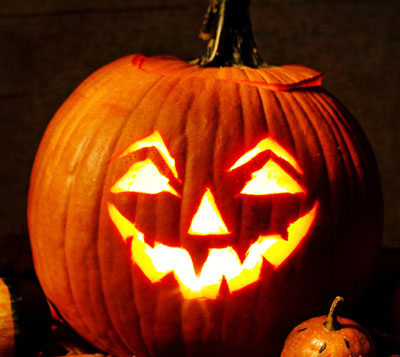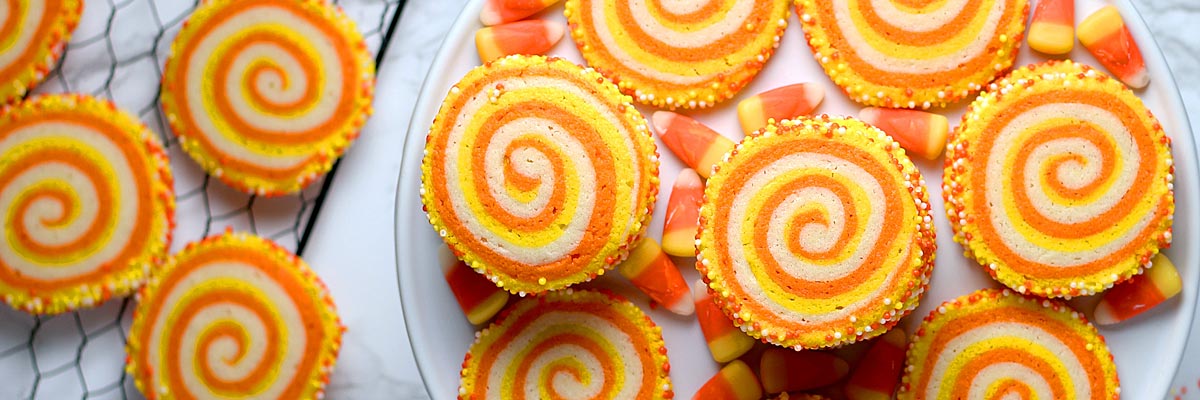Official Website of the
Catholic Diocese of Little Rock
First trick-or-treaters begged for soul cake
Published: October 14, 2019
How to Make Halloween Catholic for Kids
Several Catholic Websites offer fun suggestions about how to make Halloween traditions Catholic for kids. These include: connecting candy and snacks to saints; hosting an All Saints' Day trunk or treat; carving a Cath-O-Lantern or Saint-O-Lantern; reading saint stories or doing reverse trick-or-treating at a nursing home.
"Halloween should not be a day when our churches go dark and Christians retreat into the shadows, but when we fill the darkness with Christ's light and go out into the culture, inviting everyone to the prepare for the festival of the saints with all the joy we can muster." — Father Steve Grunow, "It’s Time For Catholics To Embrace Halloween"
Did you know trick-or-treating is Catholic in origin? That is also true for dressing up in costumes and making a jack-o-lantern. If this surprises you, you are not alone. The practice of Halloween has been separated from its Christian roots in the modern world. As a result, many seem obsessed with zombies, vampires, ghosts and the occult. It is especially bad this time of year when we are inundated with disturbing images of darkness and death, leaving Christians to worry if it is wrong to participate in Halloween.
Father Steve Grunow, CEO of Word on Fire, explains that Halloween, as understood by Catholics, puts the realities violence, horror and death "within the context of Christ’s victory over sin, death and the devil. The current secularized version of the festival has no salvific content and has been loosed from its theological moorings. It looks very much like a festival of death for a culture of death."
 Halloween comes from two different feast days in the Catholic Church: All Saints' Day on Nov. 1 and All Souls' Day on Nov. 2. The word, "Halloween" or "All Hallows' Eve," comes from the vigil of All Hallows' Day, now known as All Saints' Day. On this day, we remember all those who have died and gone to heaven. This includes all saints, not just those who are known to us (those canonized by the Church). It is a holy day of obligation to attend Mass. Contact a parish near you to get holy day Mass times.
Halloween comes from two different feast days in the Catholic Church: All Saints' Day on Nov. 1 and All Souls' Day on Nov. 2. The word, "Halloween" or "All Hallows' Eve," comes from the vigil of All Hallows' Day, now known as All Saints' Day. On this day, we remember all those who have died and gone to heaven. This includes all saints, not just those who are known to us (those canonized by the Church). It is a holy day of obligation to attend Mass. Contact a parish near you to get holy day Mass times.
On All Souls' Day we remember and pray for all those who have died and are in purgatory. Souls in purgatory "have not yet been purified" in order to enter heaven. Dia de los Muertos (Day of the Dead), a tradition that originated in Mexico, combines the religious aspects of All Saints' and All Souls' days with cultural traditions of honoring the dead. It is celebrated from Oct. 31 to Nov. 2 with the custom of "building private altars at the tomb of loved ones where families can bring the deceased person’s favorite foods, drinks, flowers and mementos."
In "A Catholic's Guide to Halloween," Gretchen Filz explains the Catholic origins of the traditional customs of Halloween. "In medieval times Catholic churches often displayed the bones and relics of their saints on Halloween for public veneration." And Catholic immigrants from Europe brought a variety of traditions with them to America. "Dressing up for Halloween comes from the French; jack-o-lanterns come from the Irish (originally carved turnips); and the English begged from door to door for 'soul cakes,' promising to pray for the departed loved ones of those who gave them these treats, the roots of trick-or-treating."
Separating Halloween from its Catholic roots has taken some down a dangerous path. Concerns about Halloween are valid when it involves the use of Ouija boards, tarot cards, palm readings from psychics, séances or other forms of dabbling in the occult. Catholic teaching is very clear about these practices.
 "All forms of divination are to be rejected: recourse to Satan or demons, conjuring up the dead or other practices falsely supposed to 'unveil' the future. Consulting horoscopes, astrology, palm reading, interpretation of omens and lots, the phenomena of clairvoyance, and recourse to mediums all conceal a desire for power over time, history, and, in the last analysis, other human beings, as well as a wish to conciliate hidden powers. They contradict the honor, respect, and loving fear that we owe to God alone." (Catechism of the Catholic Church, no. 2116)
"All forms of divination are to be rejected: recourse to Satan or demons, conjuring up the dead or other practices falsely supposed to 'unveil' the future. Consulting horoscopes, astrology, palm reading, interpretation of omens and lots, the phenomena of clairvoyance, and recourse to mediums all conceal a desire for power over time, history, and, in the last analysis, other human beings, as well as a wish to conciliate hidden powers. They contradict the honor, respect, and loving fear that we owe to God alone." (Catechism of the Catholic Church, no. 2116)
So long as we steer clear of dangerous practices, Christina Mead, of Life Teen International, encourages Catholics to embrace Halloween. "When we decide to be afraid of the devil we give our power over to him. What message does it send the world if we, as Christians, are afraid to admit to the reality of evil? It sends the message that we’re not sure who wins this battle of good versus evil. ... Partaking in this holiday does not mean you’re opening yourself up to evil. I think that on the contrary, it means you’re claiming as your own the victory of Christ on the cross. How much more Christian can you get?"
For questions not covered in this article, check out Busted Halo, which offers ways to make Halloween educational and fun with its: "Five Saints to Help You Celebrate Halloween" and "Seven Ways to Keep the 'Hallow' in Halloween." Related articles include: "Soul Cakes: The Original Halloween "Treat," which includes a soul cake recipe, Word on Fire's "10 Most Haunted Catholic Sites In America," "Ghosts and the Catholic Church: Pointing to the Permanence of the Soul," from National Catholic Register and "What the Hell Is Halloween and How It Can Point You to Heaven," by Christopher West.




